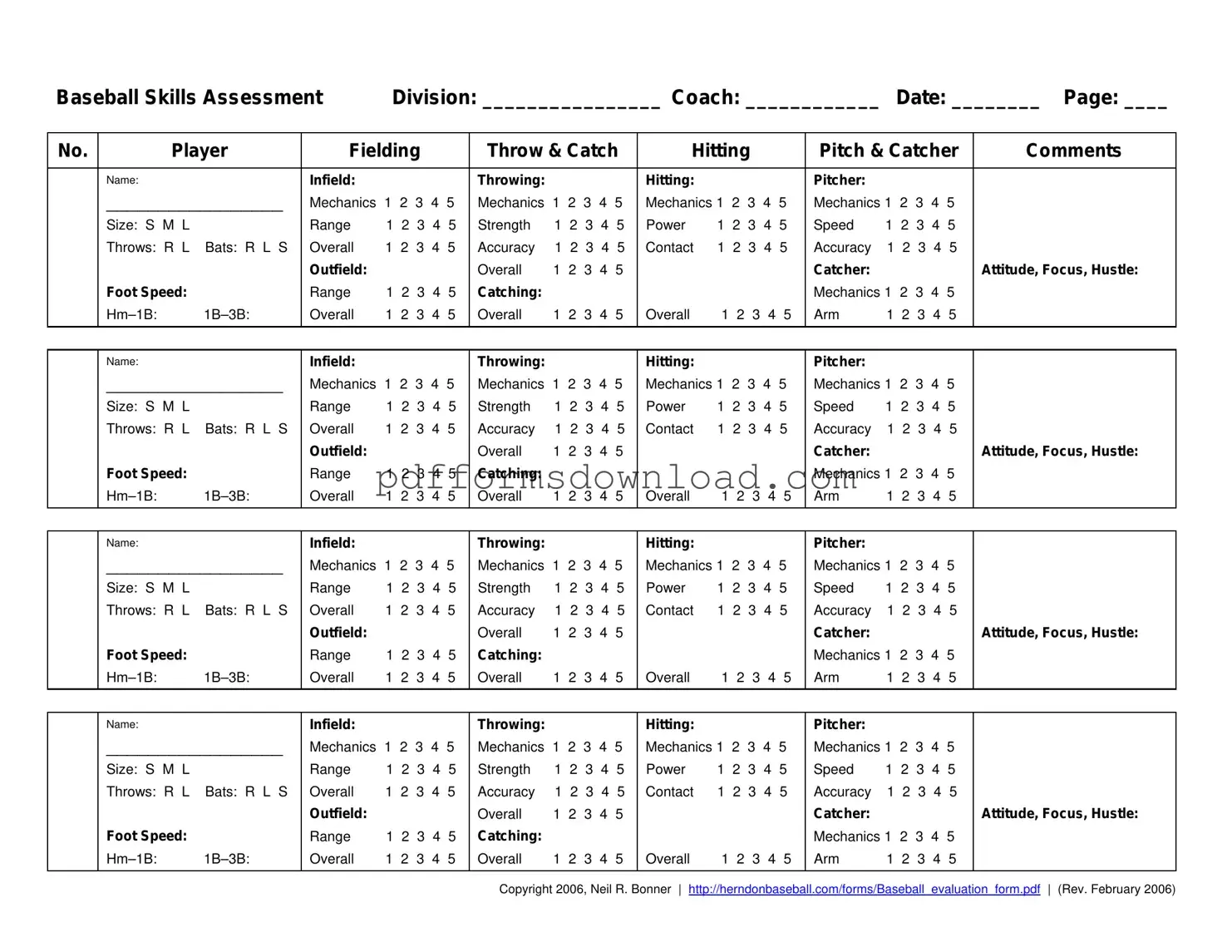What is the purpose of the Baseball Assessment form?
The Baseball Assessment form is designed to evaluate players' skills during tryouts. It helps coaches assess various abilities, including fielding, throwing, hitting, and pitching. This structured evaluation ensures a fair selection process for All-Star teams or house leagues.
How is the scoring system structured on the form?
The form uses a five-point scale for scoring. A score of five indicates exceptional ability, while a score of one reflects a poor level of skill. Scores of two, three, or four represent varying levels of proficiency in between. This quantitative approach aids in selecting players based on their demonstrated abilities.
What categories are evaluated on the form?
Players are assessed in several categories: infield skills, outfield skills, throwing accuracy, catching mechanics, hitting mechanics, power, contact, and overall performance. Additional factors such as attitude, focus, and hustle are also considered during the evaluation.
How long do tryouts typically last?
Tryouts are structured to last between two to two and a half hours. This timeframe allows for adequate evaluation of each player's skills across various activities, including warm-ups, base running, infield and outfield drills, and hitting practice.
What activities are included in the tryout process?
The tryout process includes several activities: warm-up, base running, infield skills assessment, outfield skills assessment, hitting practice, and evaluations for pitchers and catchers. Each activity is designed to showcase specific skills relevant to the game of baseball.
How should coaches use the evaluation results?
Coaches should use the scores from the assessment to select the first eight players for the All-Star team. The final positions can be filled based on additional criteria determined by the manager. This method balances quantitative scores with qualitative observations.
Can the scoring criteria be adjusted by coaches?
Yes, coaches may adjust the scoring criteria based on their perspective on what makes a good team. They can weigh certain categories more heavily, such as pitching or catching skills, to reflect the needs of their team.
What should players expect after the tryouts?
After the tryouts, players will be informed about the selection process and when decisions will be made. Those not interested in pitching or catching may be dismissed early. Coaches will communicate the outcomes to all participants in a timely manner.
